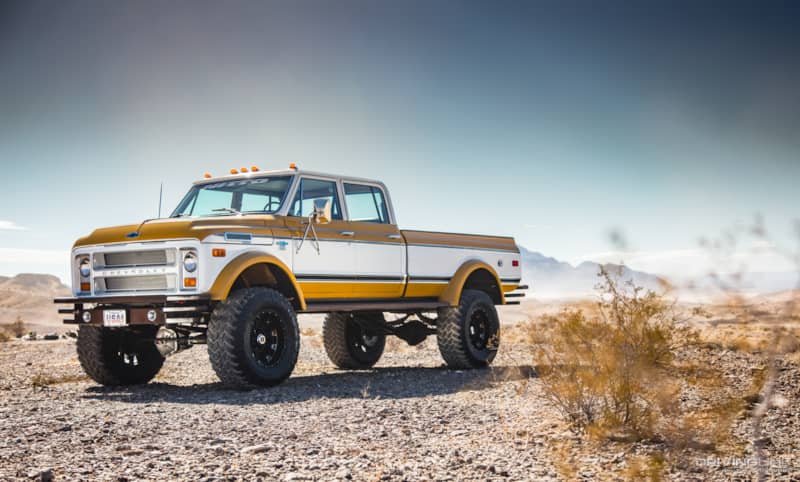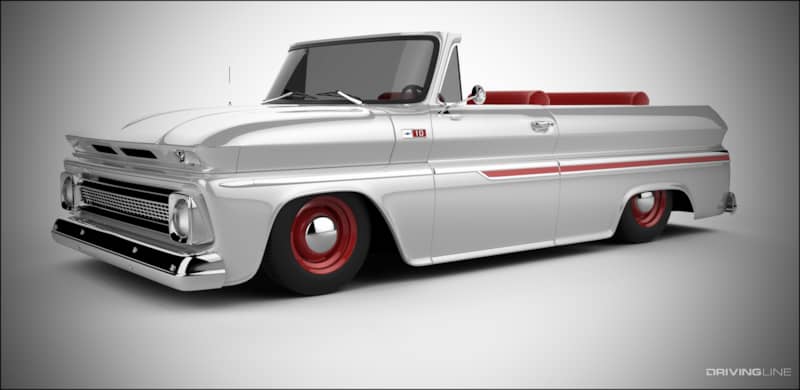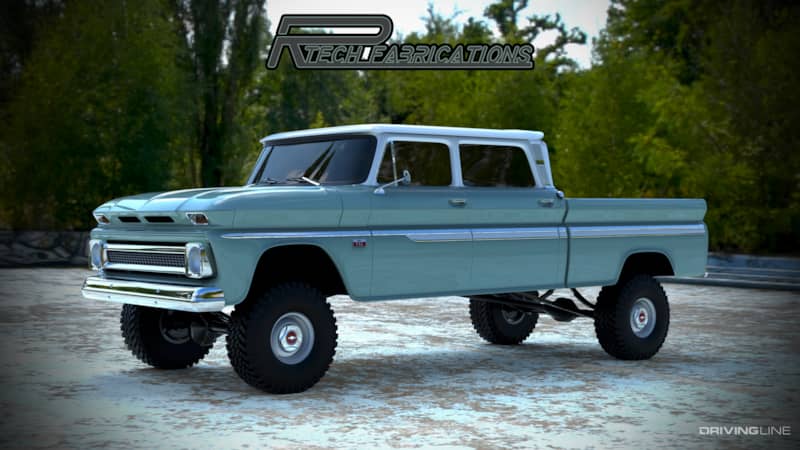Master Class: 5 Classic Truck Building Tips From Randall Robertson
You may have seen Randall Robertson and Rtech Fabrications' work in our Ride of the Week a while back. The Duke is one of the most impressive rides we've featured, and the process of creating it is even more impressive, if that's possible. We sat down with him to find out more about his process, and any advice he has for people trying to build trucks themselves. Here is what he said...
1. Passion or Fashion
First, it's important to understand why you want to build, or have someone build, a custom classic truck. One of the first things that I ask our clients is, what are you planning on doing with the truck? This is where passion or fashion comes into play. Most guys just want to have a trick truck that their friends will think is cool. They may show it a few times, but by and large it ends up being a really cool truck that is driven on the weekends for a while, and then eventually sits way more than it's driven.
The kind of people we build trucks for are more the passionate enthusiasts. They want to have their cake and eat it, too. What I mean by this is that they want a truck that is not only a classic, but also purpose-built. Our motto here at Rtech Fabrications has always been, "We build trucks to do truck things." The majority of the guys who order trucks from us want to be able to use it as a truck but with classic lines and character that have stood the test of time. Very few of the trucks we build leave our shop without a gooseneck hitch. Either way, you need to be fully aware of the high cost of a quality build.

2. Just Walk on By
After you have decided what your truck will be used for, it’s time to choose a truck. If you don't already have a truck to start with, you will need to find one to purchase for this build.
I have seen so many people go into this with so much excitement for what's about to become their lifelong dream come true that they don't look at the finer details of what they're starting with. In most of the trucks we deal with, rust is the biggest issue. For some people rust can be a real buzzkill. I know that when I'm choosing a vehicle for a client, I'm not necessarily looking for a rust-free truck, but more of a feasible rust repair. There definitely are easy rust repair jobs, but there are also some that I consider catastrophic, costing up to $20,000. In my opinion that's not feasible, but I have seen people spend that kind of money chasing their dream.
Usually the kind of rust I find acceptable would be as follows: rocker rust, inner rocker rust, cab supports or minor floor repairs. Where it starts getting really expensive is when you have rust over the windshield or on the firewall. Places of main structural integrity tend to be the most expensive repairs.
I've seen some trucks appear pretty decent, but once you start looking really close you can see there's some bodywork that has been done. If I see bodywork done in places that are usually rusted, it throws up a huge red flag. I would rather see how bad the rest is than wonder how bad it is under the bondo. In most cases, I'll walk on by a truck that is hiding problems.

Another big problem that I see is bad body fitment. This can be a factory issue, or at some point in the past, the truck might have been wrecked. It is definitely worth looking deeper than just the surface. I have seen people have to abandon a project because it was not feasible in the long run to make these repairs. Unless you're planning on putting a bunch of aftermarket parts on your American classic, you really want to buy a truck that's in pretty decent shape to begin with.
I also look for trucks that don't have a motor or transmission. Usually when an old truck like this loses a motor or transmission, people don't want to put the money back into it. That's when I'm going to get my best deal. Most trucks we build get a different motor and transmission, anyway. I've bought some very nice trucks this way.
3. Hey! Not So Fast
You've finally secured the truck you are going to transform into your dream truck. It's important to not start tearing it apart. Disassemble the truck in a way that you can take inventory of what you will have to replace or repair. In most cases, we spend at least two days completely disassembling a client’s vehicle. Needless to say, the clients do not understand why it takes so long and is so expensive.
We start by having boxes ready for storage and organizing. It will serve you well to buy a couple boxes of one-gallon Ziplock freezer bags and a couple Sharpie pens. I like to take things apart slowly and have a good understanding as to what kind of shape the vehicle is in.
It might seem kind of strange, but this is a part that I really enjoy. I like to try to imagine what kind of life this truck has had, and what kind of people owned it. It's amazing the stories that these trucks can tell just by taking them apart. I like to journal what I see and some of my concerns along the way. It helps to keep your build in order. Keeping track of all your parts will save you time in the long run. In our case, time is money. When we start removing body panels, such as fenders, doors and hoods, we try to estimate what each panel is going to require for repairs. This way, we have an idea of how much it's going to cost. This is about the time that we here, at Rtech Fabrications, start to take the road less traveled.

Not only do we restore these trucks, but we modify them into four-door crew cabs. I’d say 99 percent of the builds we do here are crew cab conversions. These conversions, in most cases, more than double the cost of the build. If this is the road that you're going down, be prepared. Instead of two doors, you have four doors. Instead of one bench seat, you have two. Instead of a standard frame, you must stretch the frame. None of this comes easily. If this is the kind of build that you are going to do or have done, it is important to understand that structural integrity is the absolute cornerstone of a successful crew cab build. A lot of people fall short because they are trying to make a cool looking truck and completely miss the structural aspect.
4. OMG! It's Going To Cost How Much To Paint This Thing?
For those of you that have not had a custom paint job done before, there is nothing cheap about it. To begin with, this process starts back a ways. Yes, all the way back to when you were doing the rust repair. Proper metal work is really important to an excellent, long-lasting paint job. In most of the trucks we build, the average cost of a paint job (keep in mind this is for a crew cab) runs about $10,000 to almost $20,000, and believe me, it can go higher than that depending on what kind of paint job you want.
When you're building a classic truck it is still very important to do high-quality body work. Don't be surprised if you have to purchase five gallons of body filler. You will probably sand at least three if not four gallons back off. You're definitely going to sand off a lot of the primer as well. On average we spend approximately 80 to 100 hours blocking a truck. Body fillers, primers and paints are way more expensive than most people realize. Don’t forget about all of the sandpaper and other supporting materials to perform these tasks. This is an area that you need to go into with eyes wide open.

5. The Light at the End of the Tunnel
You're finally to the point where you're going to start re-assembling your classic truck. The only advice that I can really give you in this area is to take your time and use the highest quality parts that you can find.
Buyer beware. There are a lot of products on the market that are good for a little over a year before they start to fade or break down. Of course, that's assuming they didn't break during installation. It is so important for you to go out of your way to find the needle in the haystack. This is an area that builders do a lot of research in to ensure they will be able to satisfy their clients for many years to come. You can be sure that most high-end builders have made a lot of mistakes along the way to their success.
One of the things that really gets under my skin is when I use a product, and for reasons completely out of my control, it fails. To the client it will look like it was my fault. To a certain degree it may be that I did not do enough research, or it could be that the market does not supply decent parts. This is a struggle that all builders have to endure daily.











